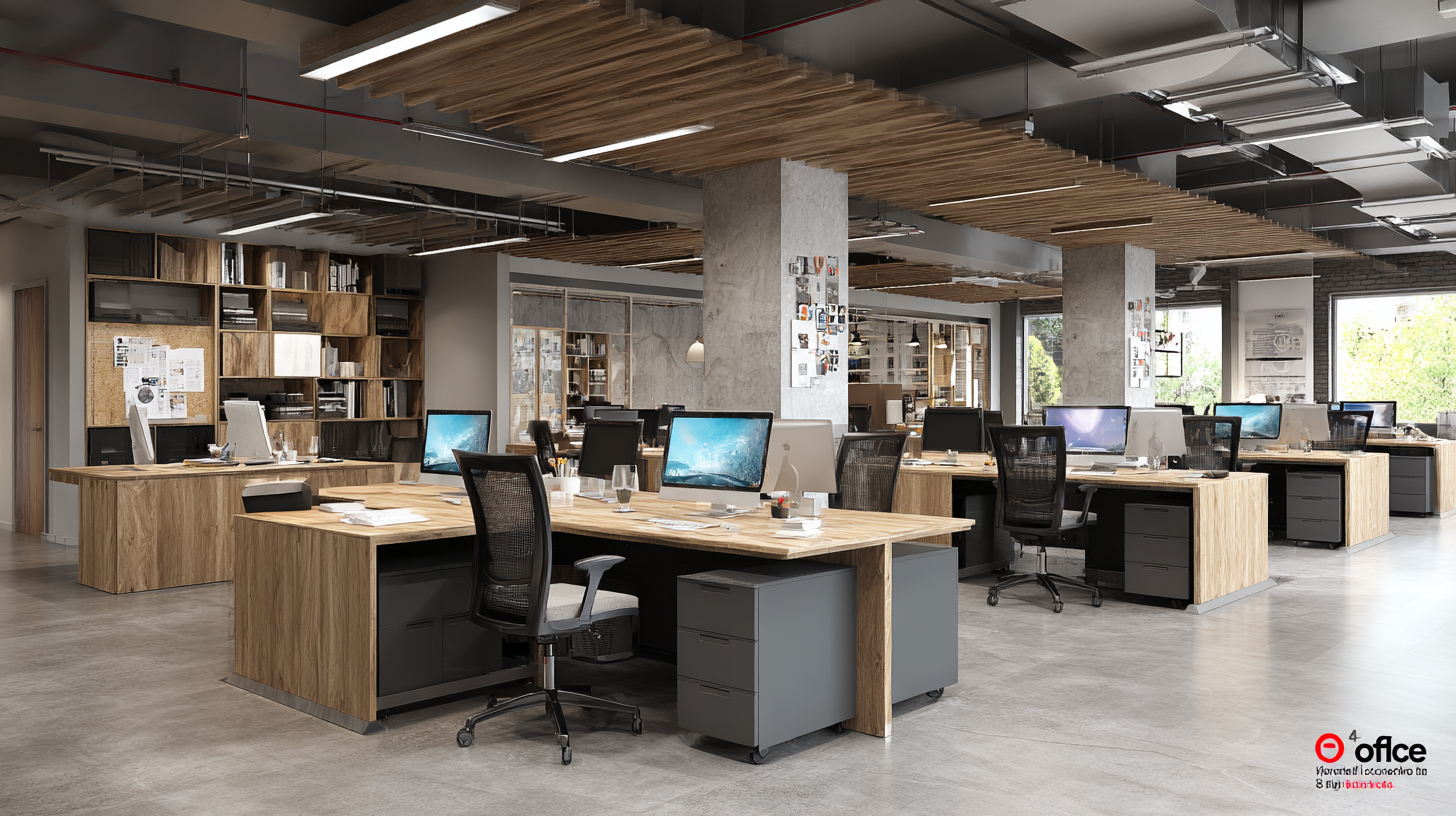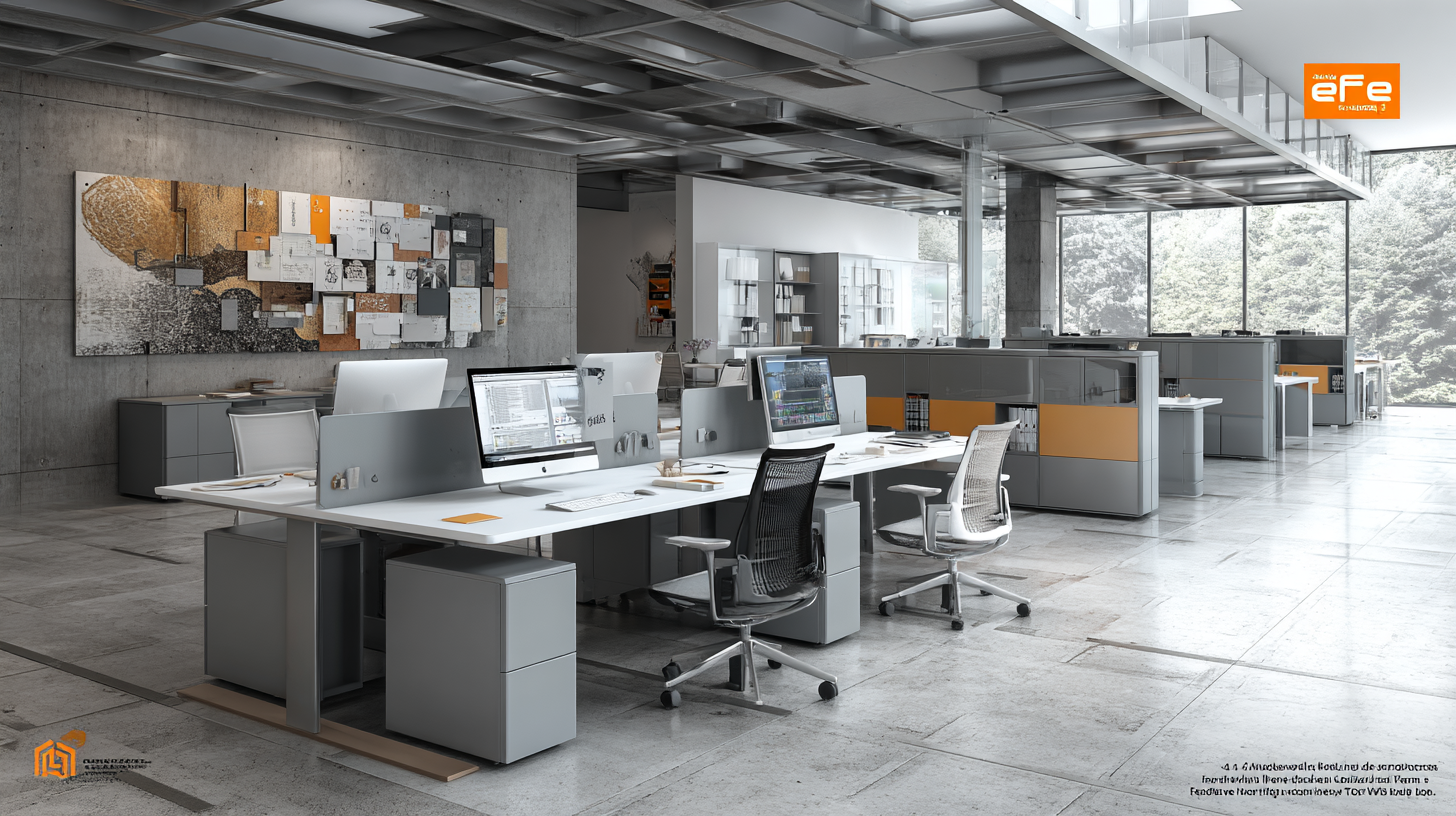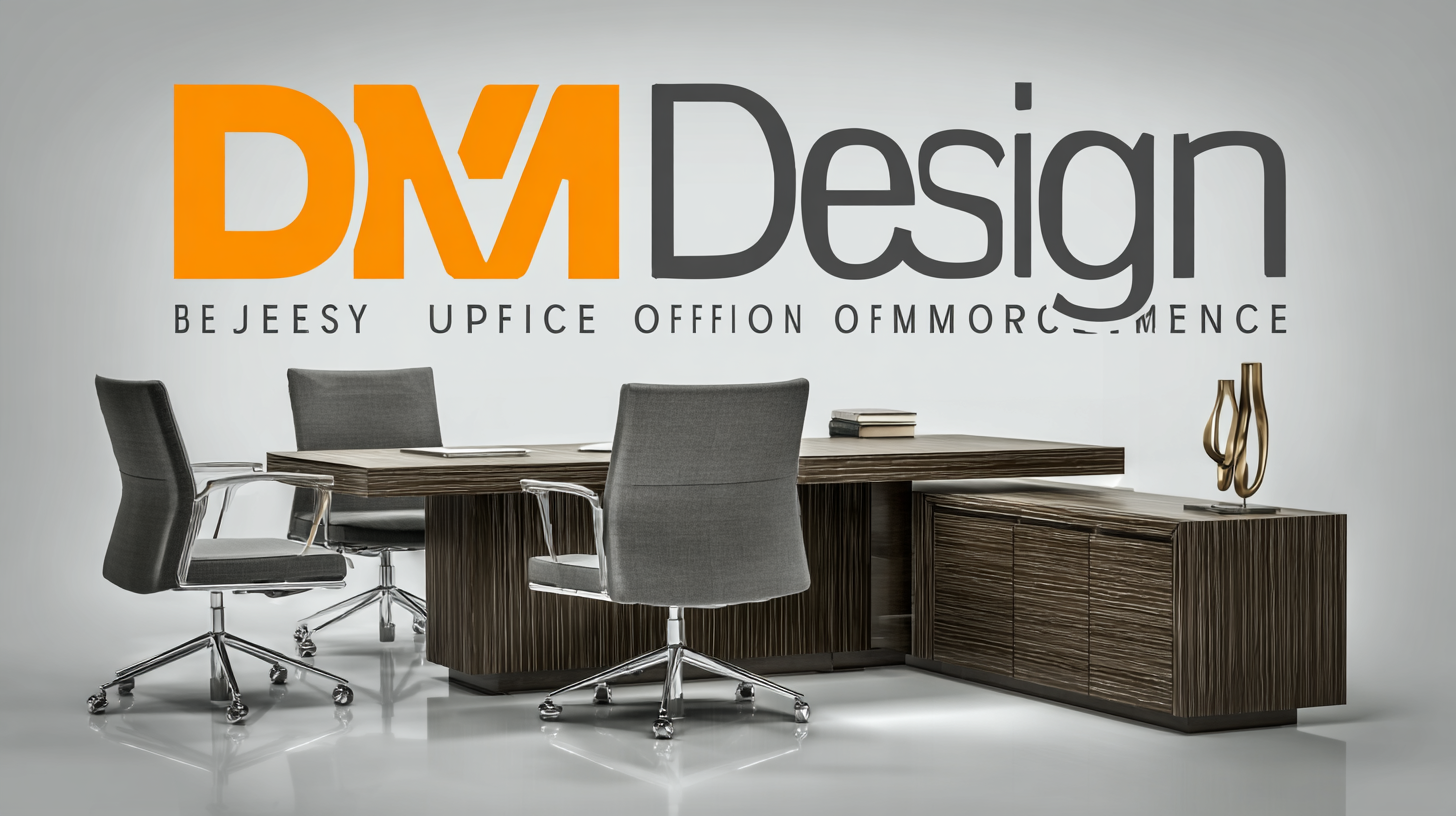7 Key Elements of the Best Office Furniture Design for Modern Workspaces
In today's rapidly evolving work environments, the importance of effective Office Furniture Design cannot be overstated. According to the Global Office Furniture Market Report, the industry is expected to reach a valuation of $79 billion by 2026, driven by the rising demand for ergonomic and multifunctional office solutions. As organizations strive to enhance employee productivity and well-being, the design of office furniture has become a critical factor in creating conducive workspaces. The integration of modern aesthetics with functionality not only reflects a company's brand identity but also supports the growing trend of remote and hybrid work. With China manufacturing leading the way, producing high-quality office furniture that meets international standards, the emphasis on quality and innovation is paramount. In this blog, we will explore the seven key elements that define the best office furniture design for modern workspaces, ensuring that companies can make informed choices that resonate with both style and practicality.

Essential Aesthetic Features for Modern Office Furniture Design
When designing modern office furniture, aesthetic features play a crucial role in creating an environment that enhances productivity and employee well-being. According to a recent report by Global Workplace Analytics, well-designed workspaces can increase employee productivity by up to 25%. Choosing furniture with vibrant colors and engaging designs not only beautifies the office but also fosters creativity and collaboration among team members.
Tip: Incorporate biophilic design elements, such as furniture that complements greenery or natural light. This can lead to improved mood and cognitive function, as indicated by a study from the University of Oregon, which found that access to natural elements can enhance workplace satisfaction.
In addition to aesthetics, the functionality of office furniture must not be overlooked. Ergonomic features contribute significantly to comfort and health. The Human Factors and Ergonomics Society reports that well-designed ergonomic furniture can reduce musculoskeletal disorders by 40%. Sleek, adjustable desks that allow employees to change positions throughout the day not only meet aesthetic standards but also promote a healthier work style.
Tip: Consider incorporating modular furniture that can be easily reconfigured. This adaptability not only caters to the dynamic nature of modern workspaces but also helps maintain a fresh and inviting atmosphere.

Maximizing Functionality: Ergonomic Considerations in Office Furniture
In modern workspaces, the importance of ergonomic considerations in office furniture design cannot be overstated. As employees spend long hours sitting at their desks, furniture that promotes good posture and minimizes physical strain is essential. Adjustable chairs and desks, for example, allow users to customize their seating position, catering to varying body types and preferences. Features such as lumbar support and seat depth adjustment can help reduce back pain, while standing desks facilitate movement throughout the workday, enhancing overall comfort and productivity.
Moreover, the layout and functionality of office furniture play a significant role in optimizing workspace. For instance, using L-shaped desks can maximize corner spaces, offering both ample work surfaces and room for collaborative setups. Effective space planning is critical, particularly as workplaces evolve to accommodate hybrid models and flexible working arrangements. By integrating furniture that not only looks good but also prioritizes user well-being and efficiency, companies can create environments that foster creativity and enhance employee satisfaction.
Ultimately, balancing aesthetics and functionality is key. Thoughtfully designed office furniture should reflect the company's culture while also ensuring that employees remain comfortable and engaged. As we look forward to office design trends in 2025 and beyond, prioritizing ergonomic elements will remain a vital consideration in cultivating a productive work environment.
Sustainable Materials: Eco-Friendly Choices for Modern Workspaces
In recent years, the demand for sustainable materials in office furniture design has surged as companies recognize the importance of eco-friendly choices.
 Modern workspaces are increasingly integrating recycled and renewable materials to create a more sustainable environment. From bamboo desks to chairs made from recycled plastics, designers are finding innovative ways to reduce the carbon footprint of office furniture. These materials not only promote environmental sustainability but also add a unique aesthetic appeal, enhancing the overall look of the workspace.
Modern workspaces are increasingly integrating recycled and renewable materials to create a more sustainable environment. From bamboo desks to chairs made from recycled plastics, designers are finding innovative ways to reduce the carbon footprint of office furniture. These materials not only promote environmental sustainability but also add a unique aesthetic appeal, enhancing the overall look of the workspace.
Moreover, selecting sustainable materials often leads to improved indoor air quality. Many eco-friendly products are designed without harmful chemicals, thus contributing to a healthier work environment. By opting for furniture made from sustainable sources, businesses can create inspiring spaces that reflect their commitment to sustainability.
Incorporating plants and biophilic design elements further amplifies the benefits, bringing nature indoors and fostering employee well-being. This holistic approach not only supports the planet but also boosts productivity and creativity within modern workspaces.
Customization Options: Tailoring Office Furniture to Fit Your Brand
In today's dynamic work environments, customization options for office furniture are becoming increasingly essential. Tailoring office furniture to fit your brand not only enhances aesthetics but also reinforces your company’s identity. When businesses opt for bespoke designs, they can choose colors, materials, and layouts that resonate with their brand values and culture. Imagine a startup focused on innovation using sleek, modern furniture with vibrant hues that reflect their youthful spirit—it's a powerful way to establish a connection with employees and visitors alike.
Moreover, customization allows for improved functionality and adaptability to specific workspace needs. For instance, modular furniture systems can be configured in various ways, enabling teams to modify their layout as projects evolve. This flexibility facilitates collaboration and creativity by providing spaces that can transform to accommodate different work styles. By investing in customizable office furniture, companies can create an environment that not only looks good but also fosters productivity and employee satisfaction, reflecting a brand that is forward-thinking and employee-centric.
7 Key Elements of the Best Office Furniture Design for Modern Workspaces - Customization Options: Tailoring Office Furniture to Fit Your Brand
| Element | Description | Customization Options | Benefits |
|---|---|---|---|
| Ergonomics | Design that supports the natural posture of the body. | Adjustable chairs and desks. | Reduces strain and increases comfort. |
| Flexibility | Ability to adapt to different work styles and tasks. | Modular furniture systems. | Supports teamwork and collaboration. |
| Aesthetics | Visual appeal and alignment with brand identity. | Custom colors and finishes. | Enhances the overall workplace atmosphere. |
| Technology Integration | Incorporation of tech into furniture design. | Built-in charging stations and cable management. | Improves connectivity and functionality. |
| Sustainability | Use of eco-friendly materials and processes. | Recycled and sustainable material options. | Promotes environmental responsibility. |
| Storage Solutions | Designs that include efficient storage. | Custom cabinets and shelving. | Keeps workspace organized and clutter-free. |
| Collaboration Spaces | Areas designed for teamwork and group work. | Adjustable meeting tables and soft seating. | Fosters creativity and communication. |
Integrating Technology: Smart Furniture Solutions for Modern Offices
In today’s fast-paced work environment, integrating technology into office furniture design is essential for creating efficient and modern workspaces. Smart furniture solutions are not just a trend; they provide practical benefits that enhance productivity and employee well-being. For instance, desks equipped with built-in power outlets and USB ports allow easy connectivity for devices, minimizing cord clutter and promoting a clean, organized workspace. Additionally, furniture that incorporates adjustable features, such as sit-stand desks, empowers employees to customize their work experience according to their needs, encouraging movement and reducing fatigue.
Moreover, the integration of smart technology in office furniture extends beyond functionality. Innovative designs often include elements such as integrated lighting, sound systems, or even AI-driven features for personalizing workspace environments. For example, smart desks that track user habits and suggest optimal working times or break intervals can significantly improve overall productivity. As companies strive to create conducive work environments that cater to a tech-savvy workforce, prioritizing smart furniture solutions will not only modernize the aesthetic appeal of office spaces but also foster a culture of efficiency and wellness among employees.
